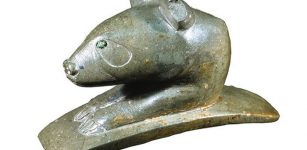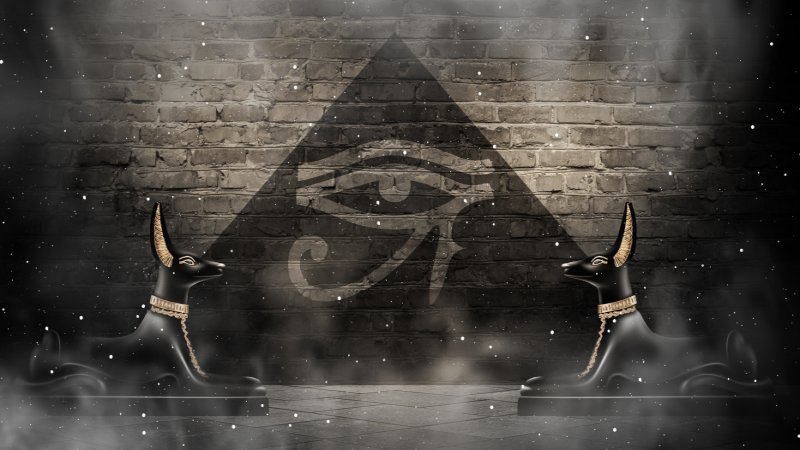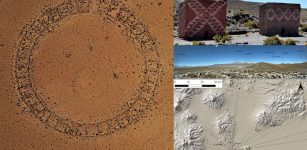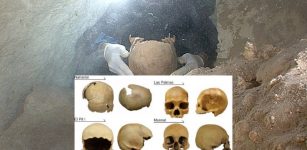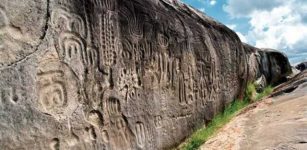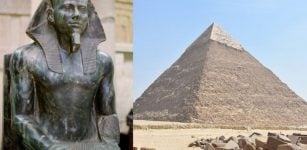Secrets Of The Scarab – Ancient Sacred Symbol In Human History
A.Sutherland – MessageToEagle.com – Ornaments in the shape of beetles are known from the late Paleolithic epoch (10,000 to 20,000 years ago). However, so much earlier than the Egyptian civilization, it is difficult to know the exact meaning these people attributed to beetle body ornaments.
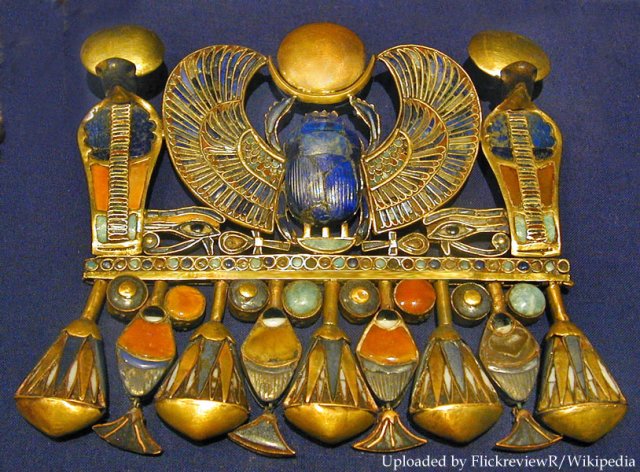
Scarab is one of the oldest and widely used symbols of the ancient Egyptians. Egyptian pharaohs worshipped dung beetles and most probably it was symbolically as sacred to the Egyptians as the cross is to Christians.
The scarabs with aesthetic qualities and shamanic symbolism were already known in the Old Kingdom (3rd millennium BC) and played an important role in the early worship of animals. It is supported by archaeological evidence discovered in graves during the time of King Den of Dynasty I.
Sir W. M. Flinders Petrie in Scarabs and cylinders with names writes that many different kinds of beetle were sacred and venerated in ancient Egypt as showed by many jars, found in graves containing numerous dried beetles, both large and small, and many amulets, especially in the form of large sacred Scarabeus sacer.
Particularly well-known is an amulet depicting ‘the sun – the big ball rolled across the heaven by the Creator, and… the scarab is an emblem of the Creator, Khepera…’ or the sun god Khepri (Kheper), in the mythology of ancient Egypt, ‘the Father of the Gods’ and this symbolism of the beetle is a part of the primeval animal worship of ancient Egypt.
The ‘Kheper’ is ‘being’ and it means existence, creation or becoming and so, the god Khepera is the self-existent creator god.’
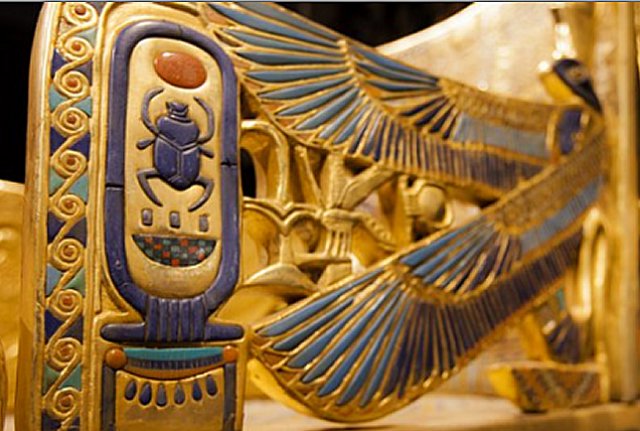
The scarab was depicted with the disc of Ra in its claws in the 12th, 18th, and later dynasties and associated with other gods as a creative emblem.
Millions of amulets and stamp seals of stone or faience were fashioned in Egypt with depictions of the scarab beetle and this tradition survived well beyond the dynastic periods.
See also:
Chartres – Symbol Of Power And Secret Ancient Knowledge
Mystery Of The Sphinx – A Guardian Of Knowledge And Symbol Of Riddles And Intrigue
10 Ancient Love Symbols You Didn’t Know About
‘On the passing to the 23rd dynasty and later the winged scarab was placed on the breast of the mummies, as the emblem of the Creator, who will transform the dead, and from the 26th to the 30th dynasties, many scarabs were placed on the mummy, usually a row of half a dozen or more along with the figures of the gods.’ (W.M.F.Petrie)
In Roman times, there were various kinds of beetles and the Greeks adopted the carved stone columns, which seems to confirm the importance of the sacred temples of the Egyptian scarabs:
“I am Cheprer, a student, and when I spread wings, back to life.”
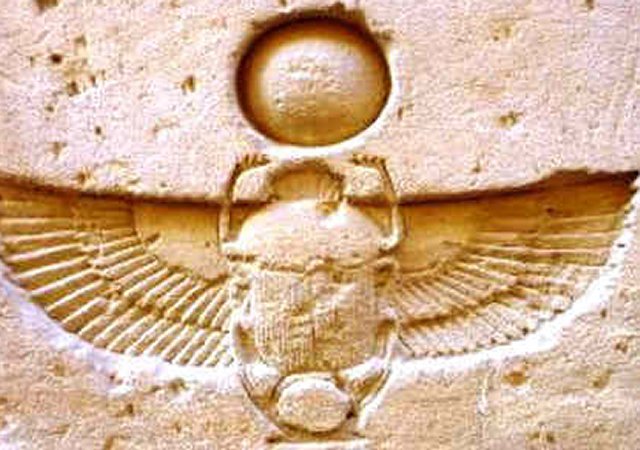
The sacred ‘Chilam Balam’ books written by the Maya describe the scarab as a dirt ground, in terms of material and moral, which is destined to become a saint, and in China, we find the same symbolic interpretation in ‘the scarab rolls its ball, which is called by life.’
‘The scarabaeus rolls his ball and in the ball there develops life as the result of the undivided effort of his spiritual concentration. If now an embryo can grow in manure and shed its shells, why then should not the dwelling place of our heavenly heart also be able to create a body if we concentrate the spirit upon it..? we read in the ‘The Secret of the Golden Flower” – A Chinese Book of Life, translated in 1931).
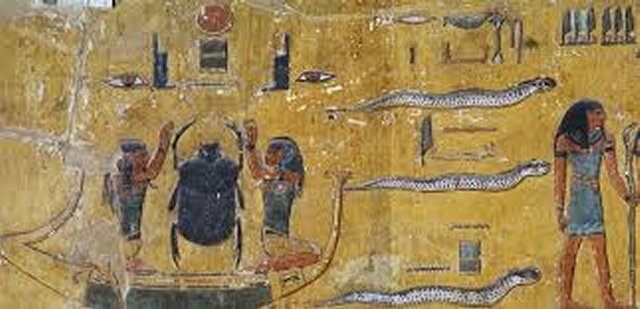
The famous text of “The Secret of the Golden Flower,” takes the sacred scarab as an example of the “work to be done” in order to reach spiritual immortality, either material (for the body), or spiritual (for the soul).
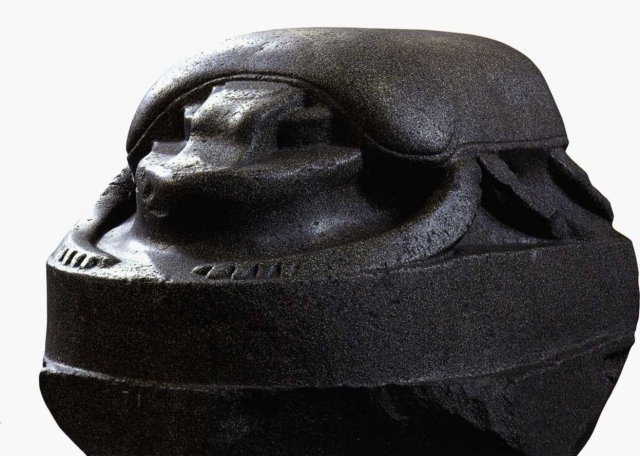
It is a goal of the Taoism philosophy, which beliefs in the strengths of various material “pellets” that aids in reaching immortality.
The scarab dung ball was identified as one of these important ‘pellet substances’.
Many beetle species have been and still are used as food in America, Australasia, Asia, and Africa; some were also eaten in Europe. Western civilization through Art Nouveau jewelry of the 1900s was richly adorned with beetles and other insects.
In Europe and North America, collars, broaches, and ear pendants used beetles mounted on bronze.
To this day, especially in Mexico, living specimens of some beetle species are worn by women as broaches, attached with a small gold or bronze chain.
By the way, some say that the scarab worn as a pendant around the neck can cause disease of the throat and larynx. Or is it only an illusion…?
Written by A. Sutherland – MessageToEagle.com Senior Staff Writer
Copyright © MessageToEagle.com All rights reserved. This material may not be published, broadcast, rewritten or redistributed in whole or part without the express written permission of MessageToEagle.com.com
Expand for referencesReferences:
Myer, I. Scarabs The History, Manufacture and Symbolism of the Scarabæus
in Ancient Egypt, Phoenicia, Sardinia, Etruria, etc.


